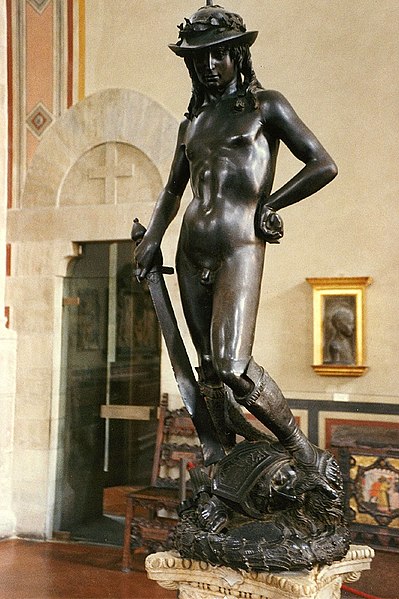 |
| Raphael, Vision of Ezekiel, 1516 |
Equally formidable, the other characters form a U beneath Ezekiel and support him into the sky. The book of Ezekiel reads, "In the center I saw what seemed four animals. They looked like this. They were of human form. Each had four faces, each had four wings. …As to what they looked like, they had human faces, and all four had a lion’s face to the right, and all four had a bull’s face to the left, and all four had an eagle’s face. Their wings were spread upward; each had two wings that touched, and two wings that covered his body;.." (Ezekiel 1:7-12). Raphael takes a different approach to the figures, focusing more upon the aesthetics of the creatures rather than giving form to the whole four-winged, three-faced idea. Each animal holds their own spiritual meaning; the eagle represents rising above the Earth, and in the piece he is Ezekiel's main support; the bull denotes power and strength, though in the piece he looks rather like a horse; the lion is a sun symbol and usually serves as an emblem of Christ, the "light of the world."
Ezekiel's vision itself is God-given, showing him the Four Cherubim who cover the Throne of God... and God's entire Plan of Salvation, shown by the animal symbols supporting his flight into the heavens. Only two cherubim are shown here, holding him up by his arms. On the left is an angel looking upon him, the angle of its gaze helping push the focus of the piece upward. Raphael creates an all-inclusive scene of Ezekiel's vision, each character's placement exactly where they fit best, and an onlooker immediately understanding the message Raphael gives. There is something incredibly poignant about the symbols Ezekiel receives totally supporting him into the light, each character integrated with focus to their true meaning as well as their aesthetic value.






















